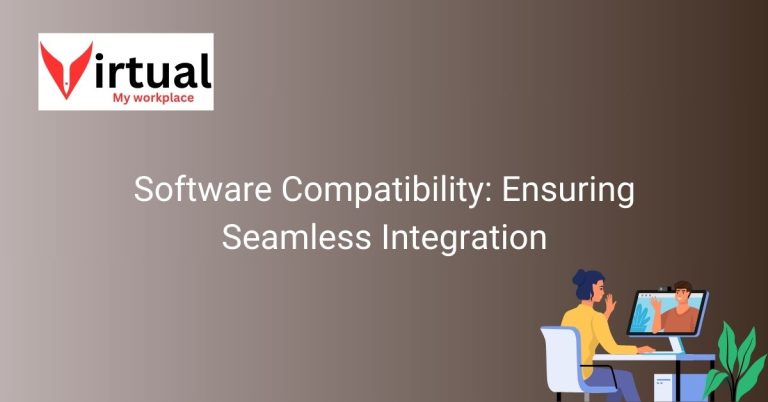Meeting Minimum System Requirements
In order to ensure smooth and efficient operations within my virtual workplace, it is crucial to meet the minimum system requirements. By understanding and adhering to these specifications, employees can maximize productivity and minimize technical disruptions. Whether it’s ensuring compatibility with software applications or maintaining hardware performance, meeting these requirements is essential for a seamless virtual work experience.
From adequate internet speed to sufficient storage capacity, meeting minimum system requirements is the foundation of a functional virtual workplace. By prioritizing these standards, employees can focus on their tasks without being hindered by technical limitations. Whether it’s upgrading hardware or optimizing software settings, staying within the parameters of these requirements is key to a successful virtual work environment.
Ensuring Smooth Operations in a Virtual Workplace
Meeting the minimum system requirements is crucial for ensuring smooth operations in a virtual workplace. These requirements encompass a range of specifications, from internet speed to storage capacity, that are essential for employees to carry out their tasks efficiently. By meeting these standards, companies can avoid technical hiccups that could disrupt workflow and hinder productivity.
Maximizing Productivity with Proper Specifications
Proper specifications play a key role in maximizing productivity within a virtual workplace. When employees have the necessary tools and resources at their disposal, they can focus on their tasks without being bogged down by system limitations. By meeting the minimum system requirements, organizations can create an environment where employees can work efficiently and effectively.
Minimizing Technical Disruptions for Employees
One of the main benefits of meeting minimum system requirements is minimizing technical disruptions for employees. When systems are not up to par, employees may experience frequent crashes, slow performance, or compatibility issues with software applications. By ensuring that all systems meet the minimum requirements, companies can reduce the risk of technical disruptions that could impact employee productivity.
Foundation for Functional Virtual Work Environment
Meeting minimum system requirements serves as the foundation for a functional virtual work environment. It establishes the baseline for hardware and software compatibility, ensuring that employees have the necessary tools to carry out their tasks effectively. By adhering to these requirements, organizations can create a stable and reliable virtual work environment that supports employee success.
Optimizing Software Settings for Efficiency
In addition to meeting hardware specifications, optimizing software settings is essential for efficiency in a virtual workplace. By fine-tuning software configurations to align with system requirements, employees can experience smoother performance and improved productivity. Properly configured software settings can streamline workflows and enhance overall efficiency within a virtual work environment.
Upgrading Hardware to Meet System Standards
As technology evolves, it is important to periodically upgrade hardware to meet system standards. Outdated hardware may not meet current system requirements, leading to performance issues and compatibility problems. By investing in hardware upgrades that align with minimum system requirements, organizations can ensure that employees have the tools they need to work effectively in a virtual environment.
Key to Successful Virtual Work Experience
Ultimately, meeting minimum system requirements is the key to a successful virtual work experience. By prioritizing these specifications, organizations can create a seamless and productive work environment for their employees. From minimizing technical disruptions to maximizing productivity, adhering to system requirements sets the stage for a successful virtual work experience that benefits both employees and the organization as a whole.”
Frequently Asked Questions
Our FAQ section aims to provide you with answers to commonly asked questions about meeting minimum system requirements for a virtual workplace.
What are the essential minimum system requirements for a virtual workplace?
Meeting the minimum system requirements for a virtual workplace includes having a stable internet connection, sufficient storage capacity, updated operating system, and compatible software applications. These specifications ensure smooth operations and optimal performance.
How important is it to meet minimum system requirements?
Meeting minimum system requirements is crucial for a seamless virtual work experience. It ensures productivity, minimizes technical disruptions, and allows employees to focus on their tasks without facing compatibility issues or hardware limitations.
Why is internet speed a key factor in meeting minimum system requirements?
Adequate internet speed is essential for a virtual workplace as it affects communication, file sharing, and overall connectivity. Slow internet can lead to delays, buffering, and reduced efficiency in completing tasks, highlighting the importance of meeting this requirement.
How does sufficient storage capacity contribute to a functional virtual workplace?
Sufficient storage capacity is vital for storing files, documents, and data necessary for work tasks. Without enough space, employees may face challenges in saving files, accessing resources, or running applications, emphasizing the need to meet this system requirement.
What role does hardware performance play in meeting minimum system requirements?
Hardware performance, including processor speed, memory capacity, and graphics capabilities, directly impacts the efficiency and effectiveness of a virtual workplace. Meeting these requirements ensures smooth operations, multitasking capabilities, and overall system stability.
How can employees optimize software settings to meet minimum system requirements?
Optimizing software settings involves adjusting preferences, configurations, and updates to ensure compatibility and performance. By keeping software up to date, customizing settings, and following recommended guidelines, employees can meet system requirements for a productive virtual work environment.







